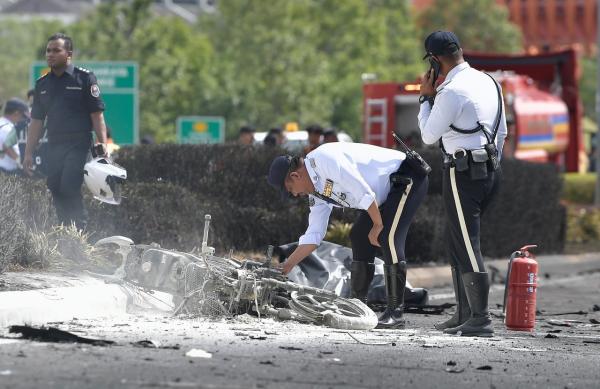PUTRAJAYA, Aug 8 — The inadvertent extension of the lift dump spoilers during Before Landing checks has been identified as the primary cause of the Beechcraft plane crash at Bandar Elmina in Shah Alam last year, according to the final accident report.
This led to a sudden loss of lift, resulting in a catastrophic loss of control and the subsequent crash.
This was revealed in the Aircraft Accident Final Report issued by the Transport Ministry's (MOT) Air Accident Investigation Bureau (AAIB) today.
“The primary cause of the accident was the inadvertent extension of the lift dump spoilers, most likely by the Second-in-Command, during the Before Landing checks,” said the report, published on MOT’s official website.
On August 17 last year, the privately owned Beechcraft Model 390 (Premier 1) bearing the registration number N28JV crashed in Elmina, killing all eight on board (six passengers and two flight crew members), as well as one e-hailing driver and a p-hailing motorcyclist on the ground.
The 148-page report said insufficient crew training and awareness regarding the operation of the lift dump system were contributing factors to the accident.
“The Second-in-Command's unfamiliarity with the specific risks associated with the lift dump system led to the inadvertent extension of the spoilers,” it said.
Contributing factors to the fatal incident included deviations from standard operating procedures, inadequate crew training, regulatory grey areas, and deficiencies in communication and decision-making.
“The seating arrangement of the crew deviated from established protocols, with the Pilot-in-Command occupying the righthand seat and the Second-in-Command in the left-hand seat, contrary to the Airplane Flight Manual.
"This deviation likely contributed to ineffective crew resource management and communication,” said the report.
Another finding revealed that the aircraft operator's failure to obtain necessary approvals for non-scheduled air services and comply with Malaysian regulations highlighted gaps in operational oversight.
“Ineffective communication and decision-making processes were evident during critical phases of the flight. The absence of specific briefings or warnings about the lift dump system operation and the decision to deviate from standard seating protocols underscored deficiencies in communication and decision-making,” it said.
The investigation also revealed instances of non-compliance and errors, but the report emphasised that these findings are not intended for apportioning blame or liability.
“Rather, they (the report) are solely for the purpose of preventing accidents in the future and improving aviation safety on the whole,” it said.
— Bernama




